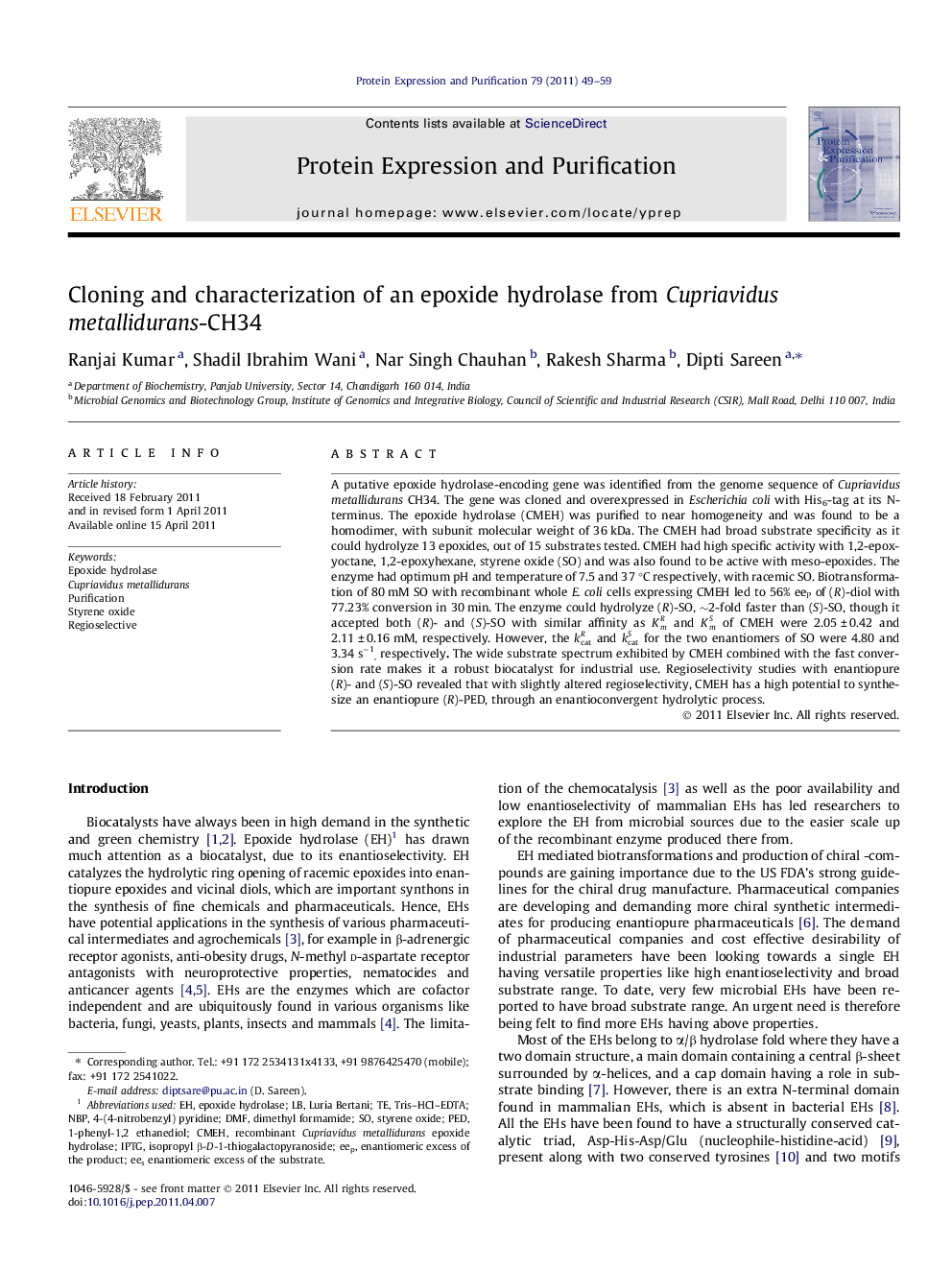| Article ID | Journal | Published Year | Pages | File Type |
|---|---|---|---|---|
| 2020842 | Protein Expression and Purification | 2011 | 11 Pages |
Abstract
A putative epoxide hydrolase-encoding gene was identified from the genome sequence of Cupriavidus metallidurans CH34. The gene was cloned and overexpressed in Escherichia coli with His6-tag at its N-terminus. The epoxide hydrolase (CMEH) was purified to near homogeneity and was found to be a homodimer, with subunit molecular weight of 36 kDa. The CMEH had broad substrate specificity as it could hydrolyze 13 epoxides, out of 15 substrates tested. CMEH had high specific activity with 1,2-epoxyoctane, 1,2-epoxyhexane, styrene oxide (SO) and was also found to be active with meso-epoxides. The enzyme had optimum pH and temperature of 7.5 and 37 °C respectively, with racemic SO. Biotransformation of 80 mM SO with recombinant whole E. coli cells expressing CMEH led to 56% eeP of (R)-diol with 77.23% conversion in 30 min. The enzyme could hydrolyze (R)-SO, â¼2-fold faster than (S)-SO, though it accepted both (R)- and (S)-SO with similar affinity as KmR and KmS of CMEH were 2.05 ± 0.42 and 2.11 ± 0.16 mM, respectively. However, the kcatR and kcatS for the two enantiomers of SO were 4.80 and 3.34 sâ1, respectively. The wide substrate spectrum exhibited by CMEH combined with the fast conversion rate makes it a robust biocatalyst for industrial use. Regioselectivity studies with enantiopure (R)- and (S)-SO revealed that with slightly altered regioselectivity, CMEH has a high potential to synthesize an enantiopure (R)-PED, through an enantioconvergent hydrolytic process.
Related Topics
Life Sciences
Biochemistry, Genetics and Molecular Biology
Biochemistry
Authors
Ranjai Kumar, Shadil Ibrahim Wani, Nar Singh Chauhan, Rakesh Sharma, Dipti Sareen,
